Greenland’s raw beauty strikes travellers from the moment they step off the plane. The wildlife reveals itself more gradually. But for those who know where to look, the vast ice-carved valleys around Kangerlussuaq in western Greenland are a haven for wild animals, including the mighty muskox.
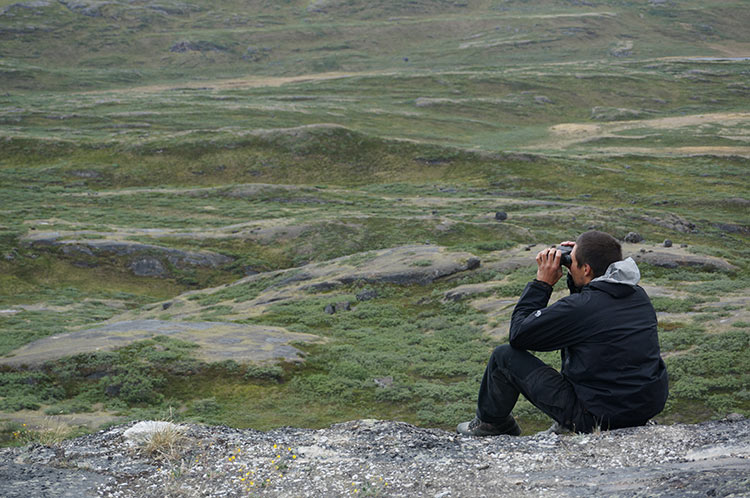
The twisted horns and thick coats of these huge animals (up to 900lbs) evoke the Ice Age for good reason. Muskoxen have walked the tundra for close to a million years and are found all over the Arctic. In Greenland their natural habitat was the southwest and northwest coasts, but during the 1960s they were introduced to Kangerlussuaq. About 10,000 of these shaggy beasts are now thought to live in the area. As for the human population, it totals only 500.
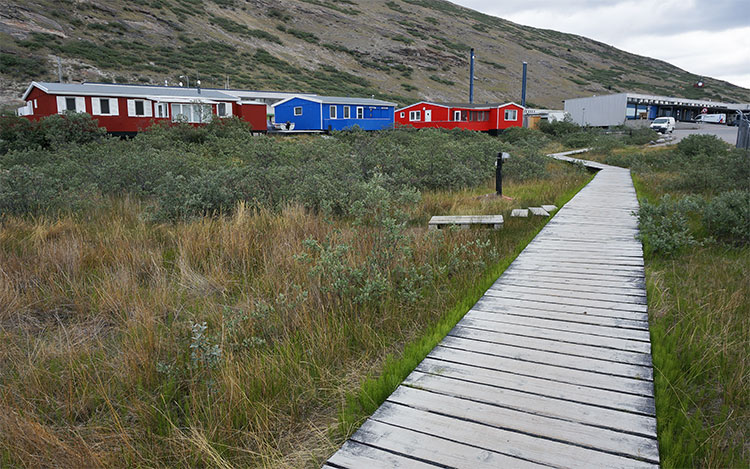
The town is a speck on the flatlands at the confluence of two rivers thundering from the Russell Glacier. Founded as an American military base during the Second World War, Kangerlussuaq’s cultural draws – a smattering of craft shops and traditional restaurants – are tucked neatly away. The town feels like the edge of civilisation, and it is, almost – drive a few minutes northeast and you’ll reach the ice cap, the start of a barren expanse covering 80% of Greenland.
Most visitors stop only briefly in Kangerlussuaq, shuffling off their plane to buy sealskin ornaments or to stretch their legs on a guided tour of the ice cap, before flying off to Ilulissat, Greenland’s most popular destination. But, as I’m discovering, the rewards are great for visitors who linger in this strange and lonely town. The hiking is incredible and the wildlife near-mythic.
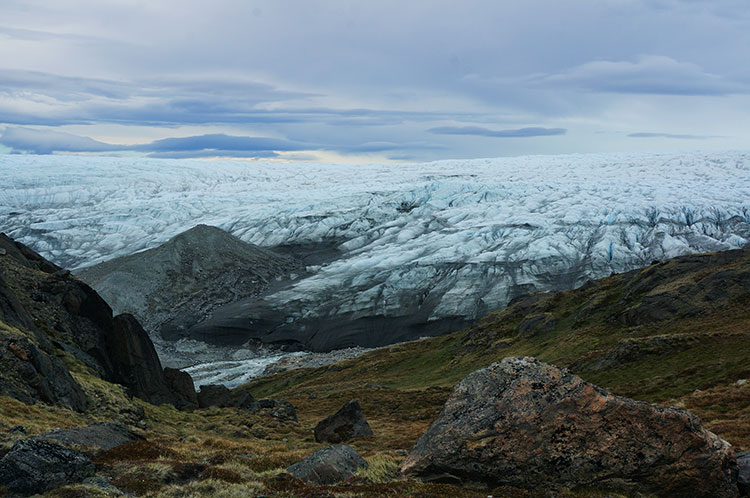
The only problem is finding it. From the crest of a hill, valleys and waterholes stretch as far as I can squint. The terrain is speckled by dark boulders, against which muskox can be difficult to spot.
“You probably look at ten rocks before you find one muskox,” laughs Jens-Pavia Brandt, my hiking guide. Jens-Pavia is the man to sort the rocks from the ox: he has lived much of his life in the outdoors, including seven years sailing the Greenlandic coast and between Denmark and Greenland. He’s also headed the Ice Patrol in Narsarsuaq, a tiny settlement in southern Greenland’s tip.
But sometimes, even carefully honed instincts aren’t a match for Greenland’s enormous scale. Jens-Pavia scans the valleys and all is still. Our nature spotting so far has been mostly forensic as we stumble (quite literally) on muskoxen bones polished by the wind.
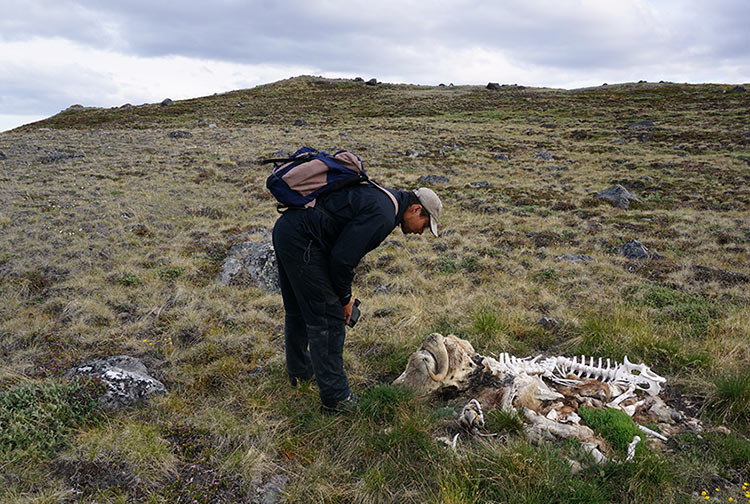
This stillness invites closer observation of the land. Lakes shine like beaten steel under the clouds. Sheltered ground bursts with tiny yellow poppies and wispy cottongrass. Greenland’s national flower, mauve Niviarsiaq (‘young women’), adds splashes of colour to the palette of grey-green. Tangles of crowberry cling to the ground to escape the winds, which descend in a matter of moments. For even in midsummer, the weather here can be deadly.
It would be easy to trek for days without encountering another soul. But hiking alone and unguided would be treacherous. Locals have plenty of stories about people swallowed up by the land, found weeks later by a trail of crows.
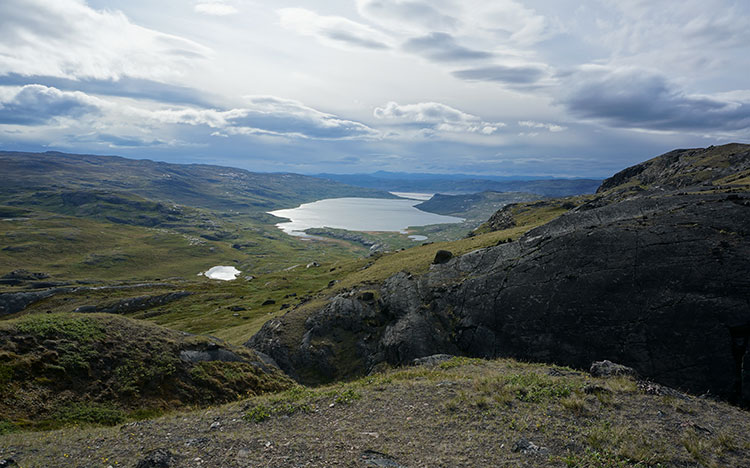
Tapping into local knowledge brings safety, and also boosts the chances of finding wildlife. For despite their bulk, muskoxen are surprisingly agile (cantering up to 60km/h, if you have a stopwatch). From a distance, we spy on one dishevelled male ox who soon trots away, alerted by our scent. Tracking another, we drop to our knees and hop between boulders for cover, praying the wind won’t change.
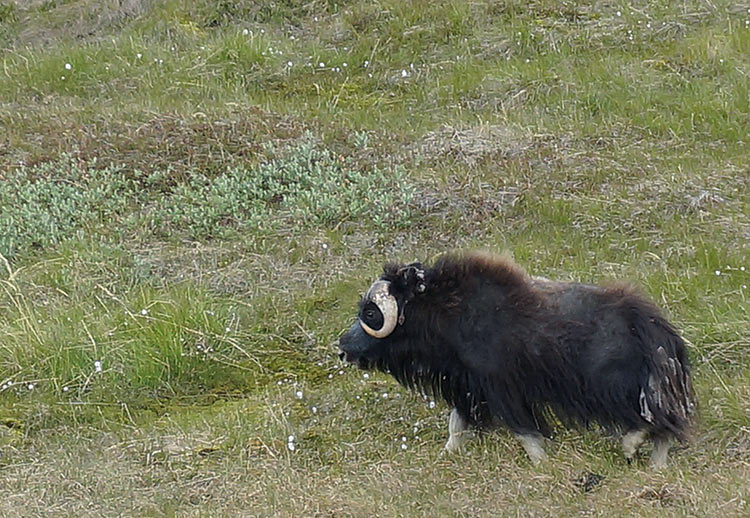
There are teasing glimpses of other animals too. Darting caribou are the hardest to spot, but occasional flashes of white draw our gaze to Arctic hares. Approaching these skittish creatures is a masterclass in patience, as they lope away, in a breakneck zigzag, at any sign of movement.
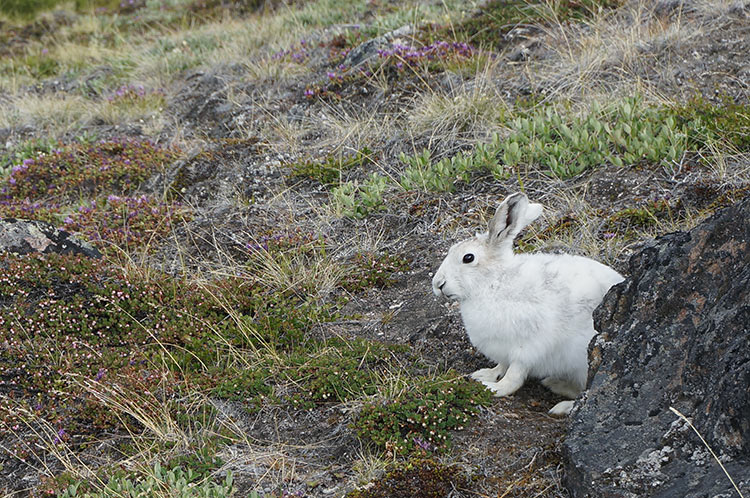
Inuit hunters are thought to have hunted game here for more than 800 years. Out in the wild there are few physical traces of their ancient culture, though hikers occasionally find old graves or ceremonial stones.
“Archaeologists call this a hunters’ bed,” says Jens-Pavia, pointing to a barely visible dugout lined with stones. “They say it gave them some protection from the wind, but it might be ritual protection.”
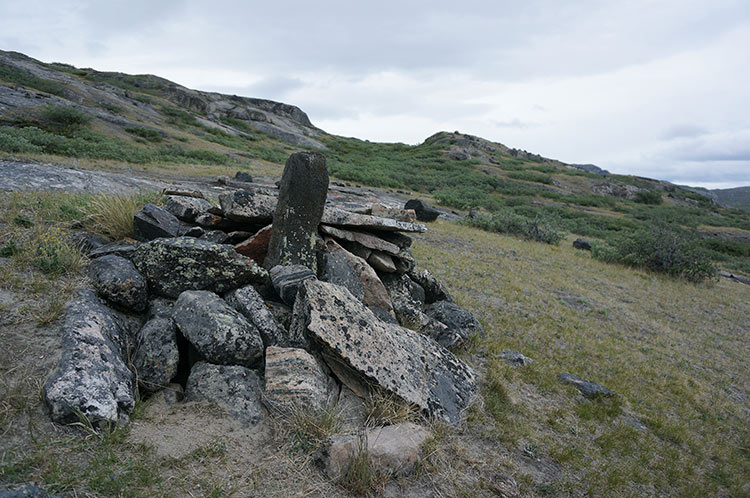
Hunters would have needed both. Their survival relied on incredible skill and knowledge of the landscape; and in this forbidding place, experience is no match for unexpected weather. Inuit hunters searching for muskoxen and other animals would have spent days at a time away from their settlements, negotiating perilous terrain and at the mercy of sudden storms.
Unseen dangers also loomed. Greenlandic myth describes the air as swirling with human and animal souls, which can leap between bodies and wreak vengeance on a whim. These vindictive spirits explain nature’s caprice in offering up bounty on one hunt, and nothing on the next. For hunters, the rewards of finding a muskox were huge: the meat could feed entire families, their skin sewn into clothing, and their horns and bones carved into weapons and talismans – a painstaking process that starts with leaving the horn to dry out for six months.
Even as a traveller, hoping only to catch sight of this colossal animal, the pursuit can feel overwhelming. The valleys yawn further than I can see, and these wily animals trot out of sight moments after we spot them. I begin to suspect my lack of natural instincts (and my feet, which manage to stumble into more than one foxhole) might be slowing down the chase.
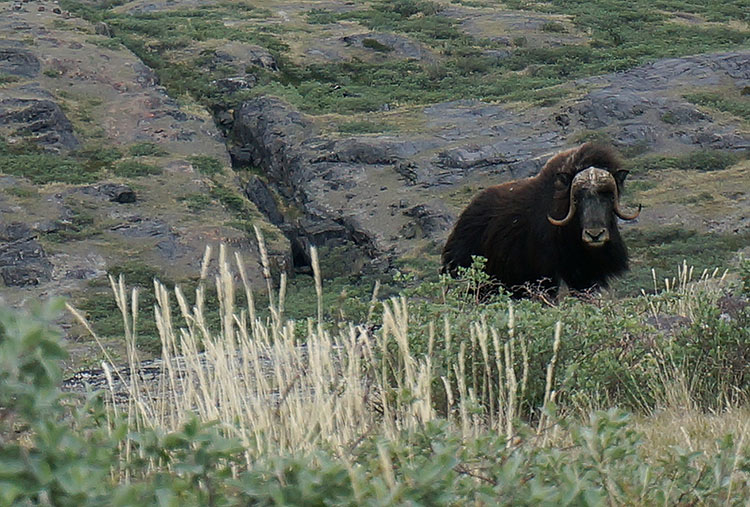
But finally we creep close enough to a muskox to hear it huff. More than six hours of hiking have led us to this one, a young male around four years old. For a few brief moments we admire him up close: the horns protruding from his skull look almost too big for the rest of his body. His mane tumbles over his bulky shoulders, right to the ground.
And then, in a moment, he’s gone. And the land is bare once more.
Anita Isalska is a writer and editor based in Lonely Planet's London office. Read more about Anita's research trip to Greenland on Storify and follow her on Twitter @lunarsynthesis.
Anita travelled to Greenland with support from Visit Greenland (greenland.com) and Greenland Outdoors (greenlandoutdoors.com). Lonely Planet contributors do not accept freebies in exchange for positive coverage.